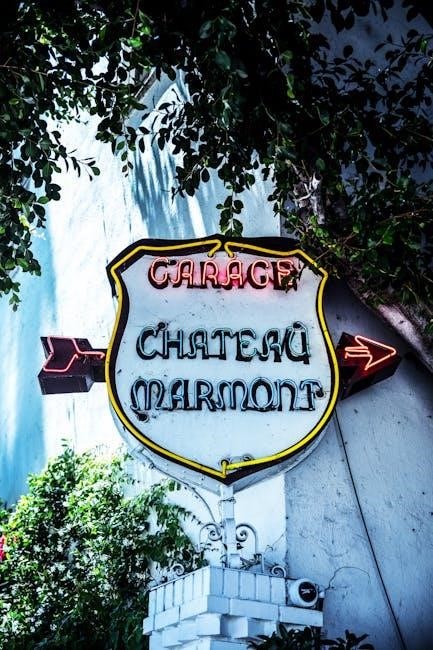The Cuban Charada is a cultural phenomenon blending Chinese and Cuban elements, featuring a 100-number chart. Each number holds mystical meanings, influencing daily life and decisions, deeply rooted in Cuban tradition.
Origins and Cultural Significance
The Cuban Charada, also known as La Bolita, traces its origins to the Chinese Chiffá, a lottery system that inspired the first 36 numbers. These numbers were later enriched by Cuban cultural elements, creating a unique synthesis. The remaining 64 numbers reflect local traditions, myths, and daily life, making the Charada a vibrant representation of Cuba’s cultural identity. Rooted in mysticism, it connects dreams and experiences to numerical interpretations, serving as a bridge between the spiritual and the mundane. Despite being illegal, the Charada has persisted as a beloved tradition, showcasing resilience and cultural adaptation. Its significance lies in its ability to blend influences from China, Africa, and Cuba, creating a distinct cultural practice that endures despite legal challenges.
The Structure of the Cuban Charada
The Cuban Charada consists of a 100-number chart, with the first 36 numbers influenced by the Chinese Chiffá and the remaining 64 reflecting Cuban cultural imagery and symbolism.
The First 36 Numbers: Influence from China
The first 36 numbers of the Cuban Charada originate from the Chinese lottery system known as Chiffá or Rifa Chiffá. This traditional Chinese game, brought by Chinese immigrants to Cuba, forms the foundation of the Charada. Each of these numbers is associated with specific symbols and meanings, such as animals, objects, or elements, which were deeply rooted in Chinese culture and mysticism. For example, the number 1 is linked to the horse, sun, and inkwell, while number 2 represents the butterfly and man. These symbols were carefully preserved and integrated into the Cuban Charada, maintaining their original interpretations. The inclusion of these numbers reflects the cultural exchange between China and Cuba, blending Eastern traditions with local customs. This section of the Charada is a testament to the enduring influence of Chinese culture on Cuban practices, particularly in the realm of gaming and numerology.
The Remaining 64 Numbers: Cuban Cultural Contributions
The remaining 64 numbers of the Cuban Charada are a unique reflection of Cuba’s rich cultural identity, blending indigenous, African, and Spanish influences. These numbers, added over time, were shaped by the island’s popular imagination and traditions. They incorporate symbols and meanings deeply rooted in Cuban daily life, folklore, and mysticism. For instance, number 4 is associated with the cat, while number 8 represents death, reflecting a mix of the mundane and the mysterious; These additions were influenced by African traditions, as enslaved Africans contributed their own symbolic interpretations to the Charada. The numbers also draw from Catholicism and Cuban spirituality, such as the inclusion of saints and religious imagery. This section of the Charada highlights the dynamic cultural synthesis that defines Cuba, making it a vibrant and evolving system of numerology. These 64 numbers are a testament to the creativity and resilience of Cuban culture, blending diverse traditions into a cohesive whole.

Historical Evolution
The Cuban Charada evolved from the Chinese Charada, introduced in the 19th century. African traditions enriched its symbolism, creating a unique lottery system. Despite legal bans, it remains a cherished cultural practice.
The Cuban Charada, also known as the Bolita, was introduced in the 19th century, blending Chinese and African influences. Originating from the Chinese Charada, it evolved into a unique lottery system. The first 36 numbers were derived from the Chinese Charada, while the remaining 64 were enriched by Cuban cultural symbolism. African slaves played a significant role in shaping its final form, incorporating their mystical beliefs and traditions. By the late 19th century, the Charada had become a popular underground lottery, despite its illegal status. The first recorded Charada business opened in Havana in 1873, marking its formal establishment. Over time, it adapted to societal changes, enduring through colonial, republican, and revolutionary eras. Its persistence reflects its deep cultural roots, making it a cherished yet illicit tradition. The Charada’s development highlights Cuba’s multicultural heritage, blending Asian, African, and Caribbean influences into a distinct cultural practice.
African Influences and Cultural Synthesis
African influences significantly shaped the Cuban Charada, particularly through enslaved populations who brought their mystical traditions. They integrated their symbolic interpretations and spiritual practices, enriching the Charada’s structure. The synthesis of African, Chinese, and indigenous Cuban elements created a unique cultural blend. Each number in the Charada reflects this fusion, with symbols like animals, natural elements, and spiritual entities holding deep meanings rooted in African mysticism. The Charada became a tool for African descendants to connect with their heritage, blending their beliefs with existing Cuban practices. This cultural synthesis transformed the Charada into a powerful expression of Cuba’s diverse identity, offering a glimpse into its rich historical tapestry. The Charada’s evolution stands as a testament to the resilience and creativity of African communities in Cuba, ensuring their traditions endured despite adversity. This blend of cultures continues to resonate deeply, making the Charada a vital part of Cuban folklore and daily life.

Significance of the Numbers
Each number in the Cuban Charada holds specific meanings tied to mysticism and daily life, guiding decisions and interpretations. These symbols reflect Cuba’s cultural identity, blending spirituality and tradition into a unique numerical system.
Numerical Interpretations and Mysticism
The Cuban Charada’s numbers are deeply intertwined with mysticism, serving as bridges between the spiritual and material worlds. Each number, from 1 to 100, is associated with specific symbols, animals, or objects, believed to carry hidden meanings. These interpretations are rooted in dreams, folklore, and cultural traditions, allowing individuals to decipher messages from the universe. For instance, the number 8 is linked to death or transformation, while the number 2 symbolizes dualism and balance. Players often rely on these interpretations to guide their choices, transforming the Charada into more than just a game of chance—it becomes a tool for self-reflection and spiritual insight; The mystical aspect of the Charada highlights its profound connection to Cuba’s cultural identity, blending Chinese influences with African and indigenous traditions to create a unique system of numerical symbolism. This system not only predicts outcomes but also offers a glimpse into the collective soul of the Cuban people.
Examples of Number Meanings
The Cuban Charada’s numbers carry rich symbolic meanings, deeply rooted in Cuban culture and mysticism. For instance, the number 1 is associated with the sun, strength, and new beginnings, symbolizing individuality and power. The number 2 represents dualism and is linked to the mariposa (butterfly), often seen as a symbol of transformation or delicate balance. Number 8, tied to death or significant change, reflects themes of renewal and the unknown. These interpretations are derived from a blend of Chinese and Cuban cultural influences, with each number offering unique insights into life’s mysteries. Players often use these meanings to interpret their dreams and experiences, turning the Charada into a tool for self-reflection and spiritual exploration. The intricate symbolism behind each number highlights the Charada’s role as more than just a game—it serves as a window into Cuba’s cultural soul and its people’s deep connection to the mystical and unknown.

Cultural Impact and Popularity
The Cuban Charada, blending Chinese and Cuban cultures, is a beloved tradition influencing daily life beyond gambling, enduring despite legal prohibitions, and evolving with modern technology.
Role in Cuban Society
The Cuban Charada, or Bolita, plays a significant role in Cuban society, transcending its origins as an illegal lottery. Despite its prohibition after the Revolution, it remains a cultural staple, with numbers derived from dreams and mystical interpretations. Each number, from 1 to 100, holds specific meanings tied to animals, objects, and emotions, reflecting the island’s rich cultural synthesis. The Charada serves as a social bond, fostering community through shared beliefs and practices. It is not merely a game of chance but a deeply ingrained tradition that mirrors Cuba’s history and identity. The Charada’s persistence highlights the resilience of Cuban culture and its ability to adapt while maintaining its essence. This unique blend of Chinese, African, and Cuban influences continues to captivate the population, making it an enduring part of daily life and cultural heritage.
Resistance and Adaptation
Despite being outlawed, the Cuban Charada has shown remarkable resilience through adaptation. Players continue to engage secretly, using technology to disseminate results and maintain participation. This illicit yet enduring practice reflects Cubans’ resourcefulness and cultural loyalty, ensuring its survival across generations.

The Cuban Charada, or Bolita, stands as a testament to cultural resilience and synthesis. Born from Chinese influences and enriched by Cuban and African traditions, it has transcended legal bans and societal changes. Each of its 100 numbers carries deep symbolic meanings, connecting dreams, mysticism, and daily life. Despite its illicit status, the Charada remains a cherished part of Cuban identity, reflecting the nation’s resourcefulness and attachment to tradition. Its enduring popularity highlights the power of cultural heritage and the human desire to find meaning in numbers and symbols. As Cuba evolves, the Charada continues to adapt, weaving itself into the fabric of modern life while preserving its historical essence.
